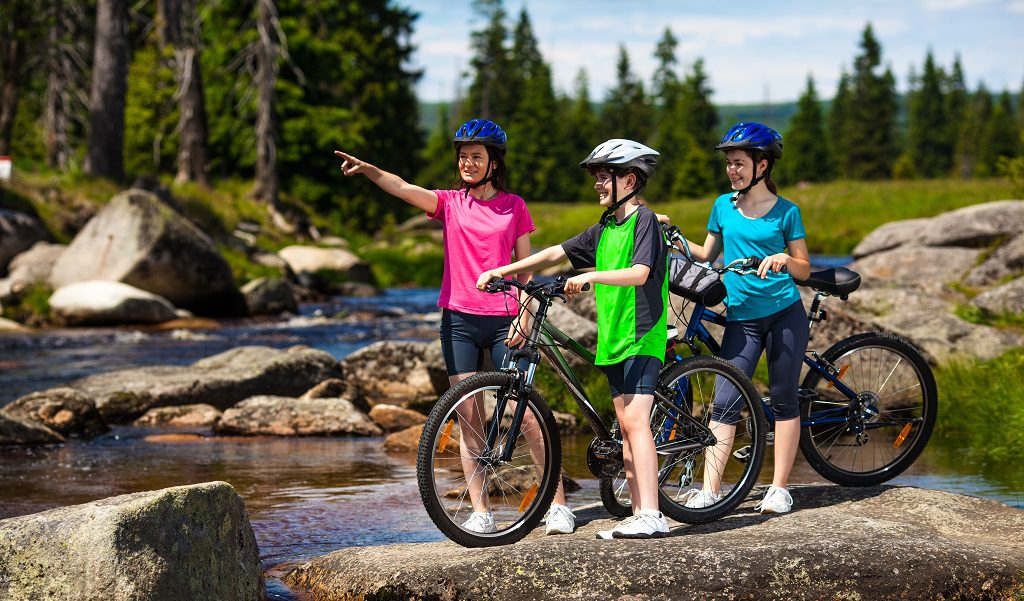
The scene is idyllic: a sunny Saturday, a beautiful park or trail waiting to be explored, and a family ready for a bike ride. But before the fun begins, there’s the often-chaotic logistical hurdle of getting everyone’s bike to the destination. For parents with an SUV, trying to load a motley collection of adult bikes and kids’ bikes can feel like a frustrating game of real-life Tetris. The varying sizes, unconventional frame shapes, and attachments can turn what seems like a simple task into a major headache.
Don’t let the transport tangle derail your family adventures. With the right knowledge and the right type of bike rack, loading up can be a smooth, secure, and stress-free process. This guide will walk you through the unique challenges of transporting kids’ bikes and provide expert advice on selecting the best rack style for your family and loading it safely.
The Kids’ Bike Conundrum: Why They’re So Tricky to Transport
Kids’ bikes are not just scaled-down adult bikes. Their designs present several specific challenges for most standard bike racks:
- Unconventional Frame Geometry: This is the biggest issue. Many kids’ bikes have steeply sloping top tubes, or no traditional top tube at all (common on step-through or BMX-style frames). This makes it nearly impossible for traditional hanging-style racks to get a secure, level hold.
- Small Size: The short wheelbase and small wheels (from 12″ on balance bikes to 20″ and 24″ on youth bikes) mean they don’t fit well into the pre-set slots of many racks designed for adult bikes.
- Obstacles and Attachments: Training wheels, bulky plastic chainguards, baskets, streamers, and flags can all interfere with how a bike rests on a rack or sits next to another bike.
- The Mix-and-Match Puzzle: The real challenge is rarely about transporting just one kids’ bike. It’s about fitting two adult bikes alongside a 16-inch bike with training wheels and a 20-inch BMX bike, all without them bumping, scratching, and tangling into a mess.
Evaluating Your Rack Options for a Family Fleet
Understanding how different rack types handle these challenges is the key to making the right choice.
Hanging-Style Racks (Hitch & Trunk Mount)
Hanging racks, whether they are a trunk mount or a basic hitch mount style, are often a parent’s first purchase due to their lower cost. On these racks, bikes hang by their top tubes from two support arms.
- The Challenge: As mentioned, the lack of a traditional, horizontal top tube on most kids’ bikes means they will hang at a steep, unstable angle, or won’t fit at all. They often hang too low, risking contact with the ground, or too awkwardly, banging into the adjacent bike.
- The Workaround: The solution for this is a “top tube adapter” (products often called a ‘Bike Beam’ or ‘TubeTop’ from brands like Saris or Yakima). This is a telescoping bar that clips onto the bike’s handlebar stem and seatpost, creating an artificial, level top tube for the rack to hold.
- The Verdict: While adapters make it possible to use a hanging rack, it’s not ideal for a family with multiple kids’ bikes. It adds an extra setup step for each bike, the adapters can sometimes shift, and the bikes are still prone to swaying into one another. They are a decent solution for occasional use but can become frustrating for frequent family outings.
Platform-Style Hitch Racks: The Family-Friendly Solution
Platform hitch racks are widely considered the best solution for families transporting a mix of bikes. Instead of hanging, bikes stand on their wheels in individual trays and are secured by arms that clamp onto the tires or hooks that go over the wheels.
- The Challenge: The primary consideration here is adjustability. You need to ensure the rack’s wheel trays and securing arms can be adjusted to accommodate the short wheelbase and small wheel size of kids’ bikes (typically down to 20-inch wheels).
- Why They Excel for Families:
- Frame Shape is Irrelevant: Because they secure the bike by the wheels, it doesn’t matter what shape the frame is. This makes them a perfect bike carrier for full suspension adult MTBs, adult cruisers, and kids’ bikes alike.
- Superior Stability: Bikes are held securely in their own lane, dramatically reducing sway and contact. This protects your investments, from your high-end mountain bike to your child’s first “real” bike.
- Ease of Loading: Platform racks have a lower loading height than roof racks, making it easier to lift bikes into place. Some racks designed as heavy-duty ebike carriers even offer optional ramps.
- Future-Proof: A quality platform rack will grow with your family. As your kids transition from 20-inch to 24-inch and then to adult-sized bikes, the rack will easily adjust. Its versatility also means it can handle a friend’s fat tire bike rack needs on the same trip.
- The Verdict: For families who bike regularly, investing in a quality platform hitch rack from a reputable brand like Thule, Kuat, or Yakima is almost always the best long-term decision. The convenience and security are well worth it. Look for premium features like swing-away bike racks add-ons, which allow you to access the SUV’s trunk even with bikes loaded—a lifesaver for grabbing snacks, jackets, or first-aid kits.
Roof Racks
Roof racks are another “no frame contact” option that completely bypasses the challenges of kids’ bike frames. Each bike gets its own carrier on the roof.
- The Verdict: While a very secure option that leaves your trunk fully accessible, roof racks can be impractical for families. Lifting multiple bikes—especially after a long ride when kids (and parents) are tired—onto the roof of a tall SUV can be strenuous and difficult. The constant awareness of overhead clearance needed for garages and drive-thrus is another significant downside.
Safe Loading Strategy: A Parent’s Checklist
Once you have your rack, loading it safely is crucial. A secure load is a safe load.
- Prep First: Before bringing bikes to the rack, remove any loose items that could interfere with mounting or fly off during transit. This includes water bottles, baskets, and especially training wheels if they prevent the bike from sitting flush in a wheel tray.
- Plan Your “Tetris” Game: Always load the heaviest bike first and closest to the vehicle. Then, work your way out with progressively lighter bikes.
- Alternate Directions: Load bikes with their handlebars in alternating directions (one facing left, the next right, etc.). This helps prevent handlebars and pedals from clashing.
- Use Adapters Correctly (If Using a Hanging Rack): If you must use a top tube adapter, fit it securely to the bike first before lifting it onto the rack. Make sure it’s level and tight.
- Check for Contact Points: Once all bikes are on the rack, do a visual check. Are any pedals digging into a nearby frame? Are brake levers rubbing against a saddle? Make small adjustments to seat heights or pedal positions (if possible) to create clearance. A small piece of foam or a rag can be placed between bikes for extra protection if a contact point is unavoidable.
- Secure Every Bike: Follow the rack manufacturer’s instructions to the letter. Ensure every strap is ratcheted, every clamp is tightened, and every lock is engaged.
- The Final “Shake Test”: This is a critical final step. Go to each bike and, holding a structural part like the frame or wheel, firmly try to move it. It should feel solid, moving as one with the rack and the vehicle. If there’s significant wobble or play, re-check your connections.
As Safe Kids Worldwide emphasizes in their bike safety tips, safety doesn’t stop when the ride is over; it includes safe transport to and from your destination.
Conclusion: Investing in Smoother Family Adventures
Transporting a motley crew of kids’ and adult bikes doesn’t have to be a source of stress. While hanging-style racks can be made to work with adapters, the clear winner for family duty is a platform-style hitch rack. Their ability to easily accommodate virtually any frame shape and size, combined with their superior stability, makes them a sound investment in safety, convenience, and peace of mind.
By choosing the right type of rack for your family’s diverse needs and following a safe, methodical loading process, you can eliminate the transport headache. You’ll spend less time wrestling with bikes in the driveway and more time where it counts: out on the trail, making memories with your family.

